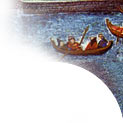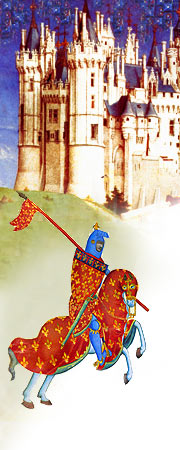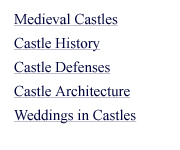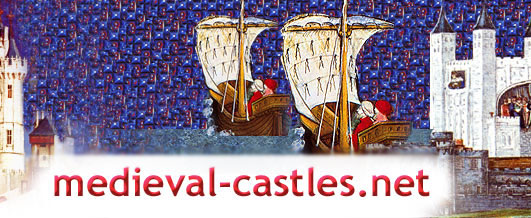|
Medieval Castle History
Medieval castles, whether in ruins or restored,
dominate the varied landscapes of Europe. Stone fortifications
were nothing new to the continent, but during the Middle Ages,
there was an explosion of castle construction as feudal lords
sought to consolidate their power and provide fortresses for
the inhabitants of their kingdoms. Some were described to
be little more than dirty, cold stone boxes, but others evolved
to become impressive reminders of years past.
Many people today cling to a romantic view
of castles-complete with knights, damsels in distress and
nonstop medieval feasting. Research shows that castles served
a very utilitarian role in feudal society. It was protector,
visible landmark, and source of pride among many communities.
Soon after the collapse of the Roman Empire,
Germanic tribes began to construct heavy stone fortifications.
Near the first millennium, another force would greatly spread
the use of castles in Western Europe. William the Conqueror,
from Normandy, France, invaded England in 1066 and changed
the medieval landscape forever. Medieval societies soon witnessed
the erection of stone towers and walls in every country. Simple
Norman donjons evolved into more elaborate strongholds with
towering walls, defensive systems and could house sometimes
thousands of people.
The castle remained a prime military resource
for much of the Middle Ages. Military tactics centered on
the taking of castles, and weapon technology improved over
the centuries to exploit any weakness that could be found
in castle architecture. It wasn't until the late 1600s, when
gunpowder and artillery became more effective, that the castle
became obsolete. Many fell into ruins during the succeeding
centuries, but there remain excellent examples of medieval
castle architecture that have been beautifully restored.
|
 |










